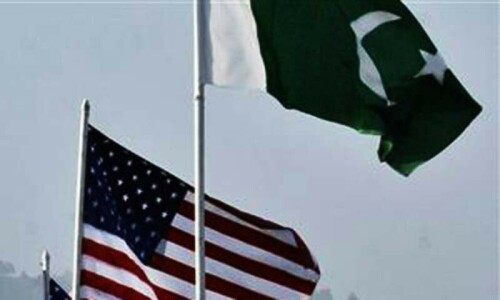AFTER the Millennium Development Goals failed to yield satisfactory results, the world needed a more holistic approach that could provide solutions sustainable in nature and that would have a global impact. Thereafter, the Sustainable Development Goals 2030, also called the ‘Global Goals’ and the ‘2030 Agenda’, were introduced from the United Nations platform to address challenges like poverty, hunger, water scarcity, sustainable energy, and education. The SDGs set 169 targets and laid out guidelines to help UN member states address persistent challenges by fully mainstreaming and localising them in national priorities, plans, projects, programmes, and policies.
Pakistan was the first country to adopt the SDGs at the government level. It affirmed its commitment to their vision by passing a unanimous resolution in 2016. The government of Pakistan subsequently established SDG support units at the federal and provincial levels, which are mandated to provide guidance on SDG implementation and progress. UN Pakistan also provided important support for SDG implementation.
In reality, however, the SDGs no longer seem central to government policy. Given the spirit shown by Pakistan in 2016, it was expected that the SDGs would be fully embraced at all levels, at least by government institutions. Today, one wonders whether there is enough will to implement them in the true spirit.
The government’s passivity regarding the implementation of SDGs gives rise to some important questions. For example, what is the actual budget allocated for SDG awareness and implementation? What have been the achievements of SDG support centres in the provinces? Are SDG budgets at the federal and provincial levels utilised for their intended purposes? How many PSDP projects have been approved for the localisation of SDGs, particularly school-related ones?
The SDGs no longer seem central to government policy.
If the government is serious about sustainable development, it needs to think about how it can align its projects, programmes, and policies with the maximum number of the SDGs’ 169 targets. It appears that a large chunk of society still knows little about the SDGs and their potential benefits. The fruits of SDG-aligned actions cannot fully be enjoyed by the people if they do not understand them.
Sindh is the epicentre of various national developmental challenges pertaining to water, education, peace, and prosperity. The government is the only powerful actor. Moving forward, if Bilawal Bhutto-Zardari — the chairman of the ruling party in Sindh and the son of a national leader who strove for education even in her last public speeches — wants to give a long-term gift to the people of Sindh, he must start by localising SDGs at the school level.
The Annual School Census 2023-2024, conducted by the Reform Support Unit of the School Education & Literacy Department (SELD), states that there are 40,978 schools in Sindh. Of these, primary schools number 36,225; middle schools, 1,581; elementary schools, 1,027; secondary schools, 1,654; and higher secondary, 491. The total enrolment in these schools is 5,219,784 (of which 41 per cent are female and 51pc male). They are reportedly taught by a total of 168,628 working teachers. Why doesn’t the government utilise its resources to target this huge number of enrolled children and teenagers and nurture them as future champions of sustainable development in Sindh? A holistic strategy can help realise this goal.
First, the government needs to form a dedicated team to conduct a needs assessment for villages where schools are being run. The identified needs can then be used to unfold criteria for implementing relevant SDGs through these schools. Various SDG-focused activities and actions that are relevant to the local context can also be executed, with an aim to spread awareness about sustainable development and how local citizens may contribute to make a global impact.
Second, a multi-language ‘SDG book’ must be provided to students. This book should contain enough educational material and visual understanding aids to guide citizens as to how various SDGs can be implemented in daily life. This ‘SDG book’ will play a pivotal role in nurturing champions for sustainable development.
Third, the SELD monitoring department should track the progress made against set school and village-wise targets. An SDG-focused training for the monitoring teams will be key to helping them understand implementation strengths, challenges, and opportunities.
Efforts for mainstreaming and localising SDGs can get a big boost if we start with schoolchildren. After all, it is they who will reap the fruits of peace, prosperity and sustainable development.
The writer is a development expert.
Published in Dawn, February 21st, 2025












































